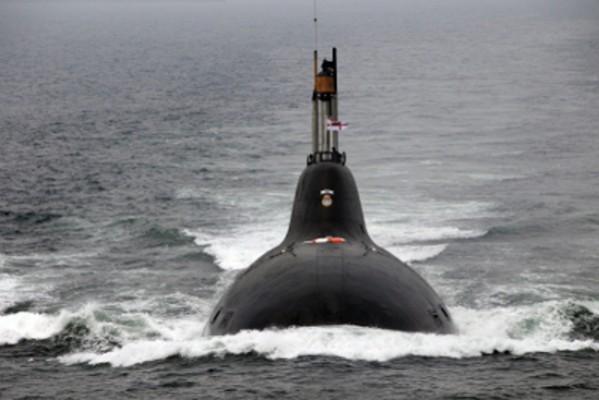
The depleting submarine fleet of the Indian Navy (IN) that had rung alarm bells with defence community asking to increase their numbers to match that with its rivals. Their cries have finally been heard by the defence ministry with the change in the government at the helm and the inception of a new full-fledged defence minister.
The ramping up of the submarine fleet is finally taking off, given the present government's nationalistic stand when it comes to security related issues.
Since taking over the office in November 2014, Defence Minister Manohar Parrikar said his task was cut out to bring transparency, make faster clearances, protect interests of armed forces and clear the back-logs.
On Saturday, the Defence Acquisition Council (DAC) cleared proposals to a tune of ₹8,341 crore and with a stress on Prime Minister Narendra Modi's "Made in India" campaign. It also cleared the buying of 22 Harpoon missiles for HDW submarines.
Currently, India has close to 15 submarines with one of them being nuclear subs and the rest being conventional ones. But half of them are unavailable due to repairs they have to undergo. India operates 10 Kilo-class Type 877EM - or Sindhugosh-class boats. It also operates four Shishumar-class Type 209/1500 vessels designed by Howaldtswerke-Deutsche Werft (HDW) in Germany.
India had planned to have 24 boats by 2030 according to the plan approved by CCS Cabinet Committee on Security (CCS) in July 1999. But there has not been any acquisitions for a long time.
Project-75
This project envisages six submarines to be built in India by the French Armaris (a joint venture between France's DCN and Spain's Navantia) that will see India getting Scorpene-class boats. The deal also has a option for building an additional six units. It will be constructed in Mumbai's Mazagon Shipyard.
Though the first one was supposed to be delivered by 2012, delays have forced it to be delivered in 2016. The rest will follow eventually.
The last two subs will have Air Independent Propulsion (AIP) system developed indigenously by DRDO.
Project-75I (India)
India is expected to procure six state-of-the-art conventional submarines in India under this project with the ball was set rolling by former defence minister, Arun Jaitley who set up a committee that will determine the capability and capacity of shipyards in India to build submarines. The selected shipyards will have to bid in partnership with foreign shipbuilders wanting to bid as a tender.
Project-75I will be worth ₹53,000 crore for six diesel-electric submarines (SSK).
Foreign Companies in Make in India Mode
Germany
German defence major TKMS has said it will be participating in the Project-75I and is ready to offer HDW Class 214 boat and has promised that it will be in line with the "Make in India" initiative.
"The Indian Defence Ministry is expected to issue the P-75I RFP for which we are planning to offer the Type 214 submarine, which combines best-in-class underwater endurance and diving depth," said Gurnad Sodhi, Managing Director of Thyssen Krupp Marine Systems (TKMS) (India), Zee News reported.
The report claims that the submarine has a fuel-cell based Air Independent Propulsion (AIP) system and it is the best that is available in the market.
Japan
Japan might bid for P-75I as the Indian side is keen on the Japanese participation in the submarine building programme. Japan's Soryu-class conventional attack submarines which are a 4,200-tonne have garnered interest in India with Australia too in talks with the Japan.
Spain
Spain's Navantia is ready to offer its expertise in design and construction for India's P-75I. It is also part of the Scorpene India Consortium along with France.
"The P-75I is a very attractive programme for us. It involves the design and construction of six AIP submarines under a quite interesting industrial arrangement with a compromise between 'Buy' and 'Make India'," said Jorge García-Monedero, area director, commercial division, Navantia S.A, reported Force India.
France
France has already been part of the P-75 project as it helps Indians build Scorpene boats on their shipyards. However, P-75I subs will be bigger than the 1800-ton Scorpene class being built.
Russia
Russia has said that it will be offering India Rubin Amur 1650 class submarines to India. This boat is a low-noise, 20 knots speed and is designed for both anti-submarine and anti-surface warfare.
"The company will surely take part in the tender, and it will bid with its Amur 1650 non-nuclear submarine," an official at Rosoboronexport was quoted by TASS as saying.
Russia offers second nuclear attack submarine for Lease
One of the two nuclear-powered submarines that India uses is the Russian leased Project 971 Nerpa that was re-christened as INS Chakra.
Reports from Interfax-AVN have suggested that Russia is ready to lease a second such nuclear-powered submarine for a period of 10 years. The reported submarine in the offering will be K-322 Kashalot or other submarine from the Akula class (Akula is the NATO reporting name for the Shchuka).
India leased the Project 971 Nerpa nuclear-powered submarine of the Akula-II class in 2012 and will stay with the Indian Navy until 2022.
INS Arihant
INS Arihant is the first of the five nuclear-powered ballistic missile submarines that India is building under its secretive Advanced Technology Vessel (ATV) project. This indigenously built submarine when operationalised will build a credible nuclear triad for the country. The submarine is presently undergoing sea trials.
During recent budget presented by Finance Minister Arun Jaitley, the defence sector saw a modest 11% increase. India is currently the largest weapon importer and procures more than 65% of its weapons aboard because of the poor state of its defence-industrial base.










